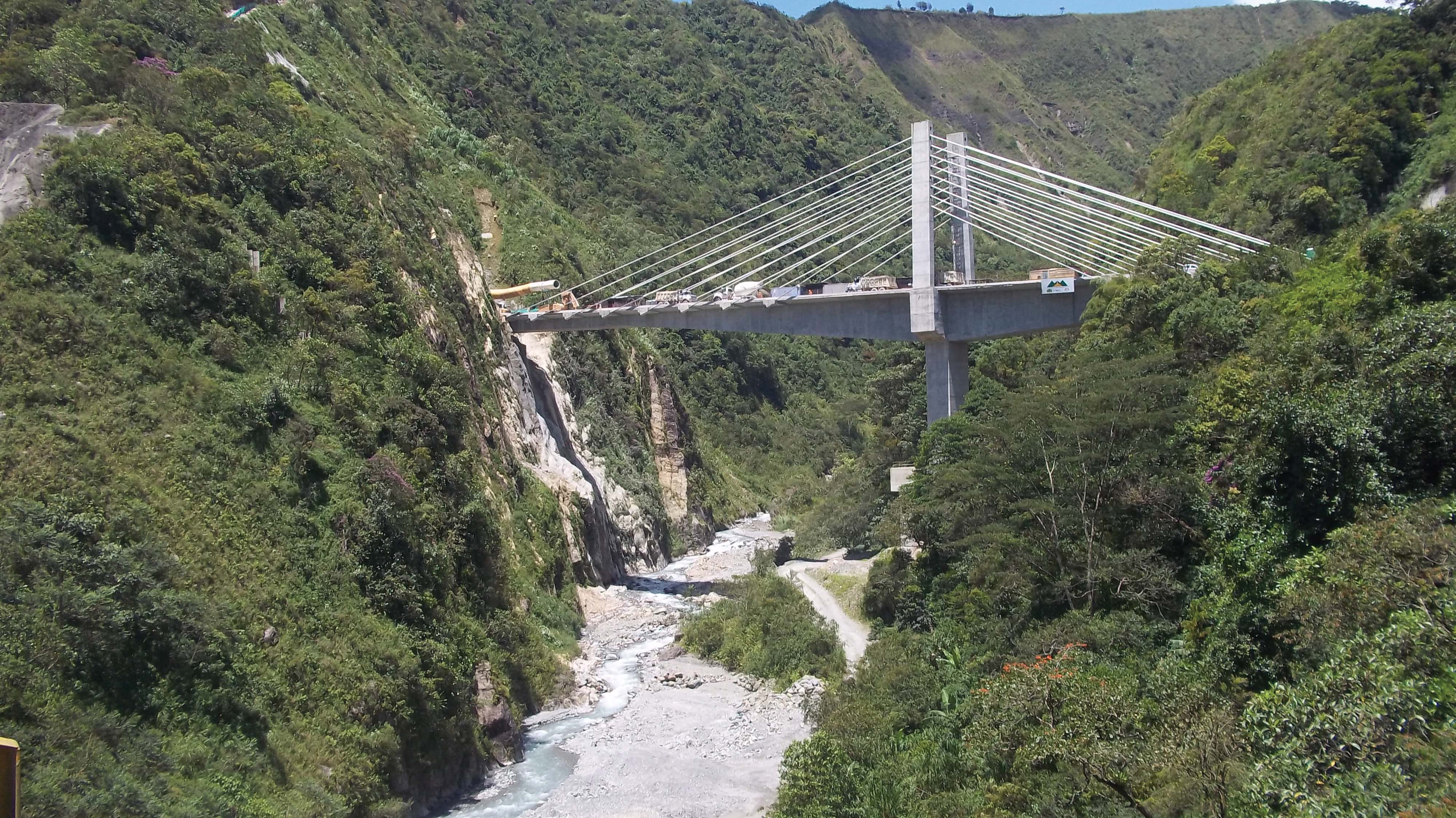
One of the most challenging road construction and ITS projects currently underway is the upgrading of the road from Bogota to Villavicencio.
Currently it takes four hours to make the 86km journey between Bogota and Villavicencio using the existing single lane in each direction road which passes through some very challenging terrain. It is the only ground connection between central Colombia and the eastern region which represents 40% of the country’s territory. The road is the only economical way to join the eastern region of the country with Bogota, Colombia’s capital, and consequently it has the highest traffic growth in the country.
An upgrade to a segregated highway with two lanes in each direction has been planned by the National Roads Institute INVÍAS. However, the new road will have to run through 18 tunnels totalling almost 15km in length as well as across 50 bridges and viaducts with a total length of 5,228m. In some section the work is an upgrade to the existing roadway but most, including most the tunnels and bridges, is completely new green-field infrastructure.
Colombian concessionaire
Monitoring and control systems in the tunnels are centred on 215 fixed CCTV/ machine vision cameras which detect incidents, stationary vehicles or obstacles, wrong way drivers and pedestrians. There are also individual detectors for visibility, fire and carbon monoxide. SOS posts along with communications including loudspeakers and road signage are available should an incident occur. All the tunnels will also be equipped with power generators and backup power, a lighting system and emergency evacuation routes.
Coviandes has also specified automatic incident detection systems along the full 86km between Bogota and Villavicencio including 72 pan and tilt cameras and a fourth weather station added to the three that are already deployed. There will be also variable message signs along the roadway to provide drivers with real-time information about road conditions, speed limits and incidents.
In normal operation Boquerón will remain the lead control room with the other two acting as monitors. However, all three control centres can share the control of the road and each is equipped to manage the entire road and take the lead in the event of an incident. This includes a complex radio communication system based on the transmission of the digital mobile radio signals from three mountains joined by a radio link that covers the entire length of the road.
In the event of an incident both single lane running and contraflow arrangements can be quickly implemented using either the VMS or a combination of VMS and cones. The design of the new road is such that in some sections it runs parallel to the existing road so there will be seven sections where traffic can be diverted onto and off of the old road in the event of a major incident.
While the first section will be opened this December, it will be until July 2017 before the highway is finished and once completed it will cut the journey to about 90 minutes and reduce vehicle operating costs by up to 60%.












